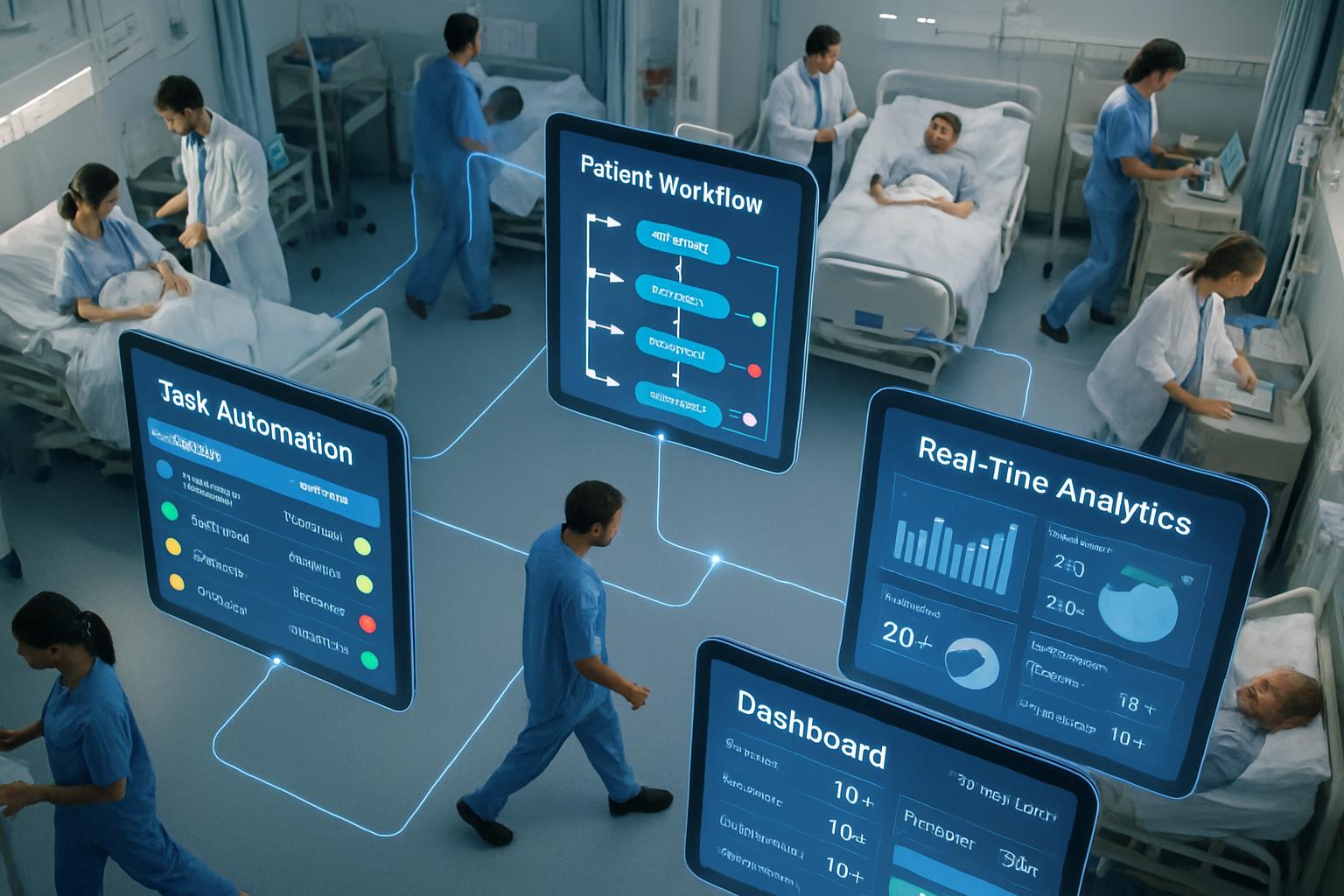
AI CERTS
5 hours ago
NHS bets on healthcare workflow automation for faster discharge
This article unpacks the technology, evidence, and outstanding risks behind the August 2025 announcement. Industry leaders should understand the opportunity and the caveats before scaling similar tools.
AI Pilot Overview Details
Initially, Chelsea and Westminster NHS Foundation Trust began public testing in August 2025. Furthermore, the system runs on the Federated Data Platform, part of the Prime Minister's AI Exemplars. Structured data is pulled from electronic systems for patient records processing. Subsequently, a large language model drafts diagnoses, medications, and follow-up recommendations. Therefore, this testbed offers a real-world laboratory for healthcare workflow automation at scale. These steps create a near-complete summary within seconds. Therefore, the section now turns to why ministers back the experiment.

Drivers Behind NHS Trials
Paperwork absorbs almost a quarter of junior doctors' time. Consequently, ministers seek healthcare workflow automation to reclaim clinical hours. The Spring 2024 Budget projected £500-850 million annual savings if digital tools scale nationwide. Moreover, delayed summaries contribute to bed blocking that reduces hospital efficiency across regions. Earlier Microsoft Copilot trials showed 43 minutes daily paperwork savings per staff member, strengthening the policy case. In contrast, clinicians fear rushed adoption could risk safety. Therefore, the pilot keeps a human in the loop and logs every model decision. Stakeholder pressure for results remains intense. The next section reviews early metrics emerging from the wards.
Early Results And Projections
Initial internal dashboards show documentation time falling by over 50 percent. Additionally, public feedback from 100 citizens rated the draft summaries clear and timely. Nevertheless, no AI generated summary reached a GP during phase one, according to NHS digitization minutes.
- Government modelling: £500-850 m yearly productivity upside
- Chelsea & Westminster: 50% faster discharge notes
- Copilot context: 400,000 staff hours saved monthly
Moreover, advocates claim healthcare workflow automation could release thousands of beds annually by smoothing throughput. Such healthcare workflow automation promises faster bed turnaround if accuracy holds. Academic studies offer a mixed view on accuracy, noting 5-10 percent omission rates in medical documentation tests. Consequently, projections remain provisional until independent audits publish. Current numbers excite policymakers yet still lack peer-review. Governance safeguards aim to close that evidence gap next.
Governance And Safety Measures
The pilot treats the generator as a potential medical device. Therefore, explainability logs trace every token back to source data. Additionally, effective healthcare workflow automation requires full auditability, not just speed. Moreover, information governance teams verify that patient records processing stays inside trust boundaries. MHRA officials are reviewing classification requirements and may demand post-market surveillance. Meanwhile, junior doctors must edit each draft before final sign-off to protect medical documentation quality. Additionally, the FDP committee schedules quarterly safety checkpoints with external academics. These controls build confidence without slowing iteration. The workforce implications now deserve equal attention.
Workforce And Training Impact
Clinicians welcome less typing but worry about losing essential narrative skills. Nevertheless, mentors use side-by-side comparisons to teach when the model misses nuance. Furthermore, NHS digitization leads plan formal curricula on prompt editing and audit responsibilities. Professionals can deepen competencies through the AI Healthcare Specialist™ certification. Consequently, structured training supports safe healthcare workflow automation adoption. In contrast, some union representatives ask for workload studies covering psychological load, not just minutes saved. Robust education frameworks ease many human factors. Attention now turns to broader industry dynamics.
Market And Technology Landscape
Several vendors market discharge tooling, from major EPR suppliers to nimble startups. Moreover, Microsoft Copilot dominates headlines, yet smaller players prototype specialised models fine-tuned on medical documentation. In contrast, open-source projects like Discharge Me! focus on transparent benchmarks. Consequently, procurement teams weigh vendor lock-in against rapid innovation. Hospital efficiency remains the deciding metric for many boards. Additionally, any solution must integrate with existing patient records processing workflows and governance layers. Therefore, successful entrants position themselves as accelerators of healthcare workflow automation rather than isolated apps. Competitive pressure should keep prices realistic while uplifting feature quality. The final section assesses what must happen before national rollout.
Next Steps For Scaling
NHS England plans to evaluate accuracy, editing effort, and impact on hospital efficiency before scaling. Additionally, regulators expect a formal medical device submission once phase-two pushes summaries into primary care systems. Subsequently, audit datasets will be released to support transparent NHS digitization research. Moreover, procurement guidelines will mandate that patient records processing stays within each trust's control boundary. Stakeholders will also benchmark tools against independent baselines for medical documentation completeness. Consequently, executives should map their legacy platforms, data flows, and staffing models against emerging healthcare workflow automation standards. Nevertheless, continuous clinician feedback must remain the cornerstone of safe innovation. Clear evidence, robust governance, and staff support will determine success. The conclusion recaps these critical themes.
Conclusion And Outlook
AI-drafted discharge summaries illustrate practical progress, not distant hype. Moreover, pilots already cut admin time and improve hospital efficiency without removing clinician oversight. Governance frameworks, detailed audits, and structured training continue to mature alongside technology. Consequently, the NHS could scale healthcare workflow automation safely if independent evidence confirms accuracy. Nevertheless, leaders must monitor patient records processing, uphold medical documentation standards, and protect training opportunities. Explore the certification above and join peers shaping responsible AI in health services.



